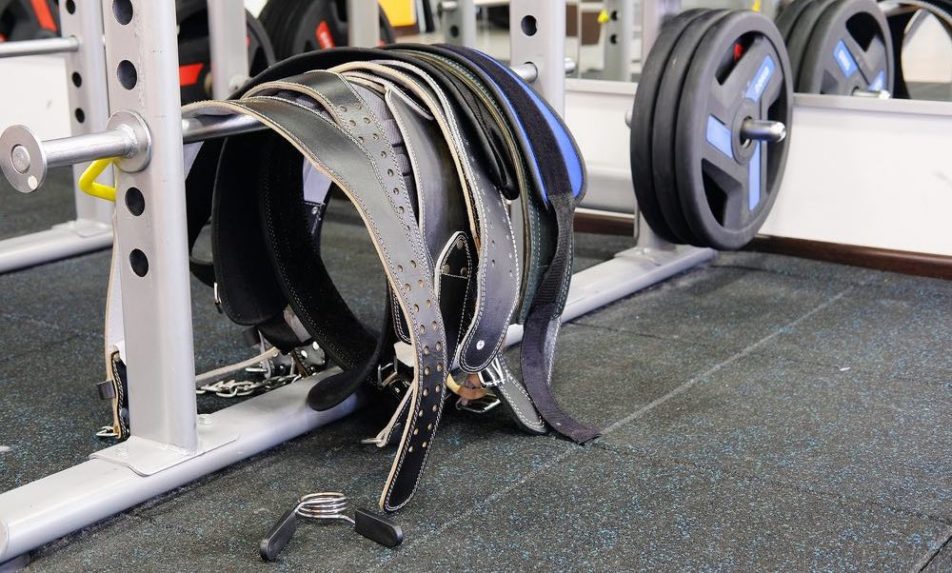Weightlifting belts are a common piece of equipment in many gyms. They offer a range of exercise and health benefits that can assist professional power lifters along with those interested in improving their lifting technique in strength training.
When it comes to incorporating weight belts and other high intensity exercise equipment into your routine, it’s important to understand any safety concerns. With weight belts in particular, one such area of interest is whether they prevent injury by supporting and stabilising the lower back.
Learn more about weightlifting belts and how they can impact your workout below.
What Are Weight Belts?
Weight belts are a piece of exercise equipment most commonly used during weightlifting, powerlifting, and CrossFit competitions. They are usually made from leather, nylon, or another sturdy material, and they vary in width from two to six inches. Weight belts typically have a buckle in the front so that they can be fastened tightly around the waist.
How Do Weight Belts Work?
Weight belts help to support the lower back and abdominal muscles during heavy lifting by applying pressure to these areas. This can help to reduce strain by supporting the spine and prevent injury, allowing lifters to move more weight. In addition, wearing a lifting belt can help to improve posture by keeping the lifter’s back in an upright position. Weight belts are commonly used for squats or deadlifts.
Pros And Cons Of Weight Belts
There are both advantages and disadvantages to wearing belts during lifting. Some of the benefits of wearing a weight belt include improved posture, reduced spine strain, prevention of injuries and increased stability during lifting heavy weights.
The benefits of wearing a weight belt essentially come from an increased ability to generate intra abdominal pressure. By increasing pressure in the abdomen this creates a more stable environment for the spine and allows lifters to lift more. This is why weightlifting belts have always been popular with power lifters, olympic lifters and now cross-fitters.
However, there are also some potential drawbacks to using a weight belt, such as a reduced range of motion, increased dependence and potential injuries. Using a weightlifting belt can have a detrimental effect on the recruitment pattern of the abdominals and create poor motor programming. When people lift, the core should activate in sequence to stabilise the lower back and generate power for the lift. This includes activation of deep core muscles, such as the internal/external obliques, pelvic floor and the transverse abdominals.
So, Do Weight Belts Prevent Injury?
There is some debate over whether or not weight belts are actually effective for injury prevention. Some studies have shown that they can help to reduce strain on the spine and promote proper lifting technique. However, other research shows that weight belts can actually increase the risk of injury, particularly in novice lifters.
It seems that the use of weight belts is a controversial topic, with many people having strong opinions on both sides. However, there is one thing that everyone seems to agree on – weight belts should only be used by experienced lifters who have good technique. Novice lifters should avoid using weight belts, as they are more likely to get injured if they do.
So, what’s the bottom line? It seems that the jury is still out on whether or not weight belts are effective at preventing injury. However, if you do choose to use a weight belt, it is important to make sure that it fits properly and is not too tight. You should also avoid wearing a weight belt all the time, as this can actually lead to more injuries.
From a chiropractic standpoint, it’s often interesting to work with weightlifters and cross-fitters who do use weightlifting belts in training, as they will often test weak for TA, oblique and pelvic floor strength – despite being capable of lifting extremely heavy weight in training and competition.
Final Note
With anyone using a weightlifting belt, it’s important that they are doing accessory work to strengthen the core and only use the weight belt when lifting maximal weights. In warm up sets or low volume training phases, it’s a good idea to have a break from the weightlifting belt in order to develop core strength and correct motor recruitment patterns in the core. This alleviates reliance on the external brace.







